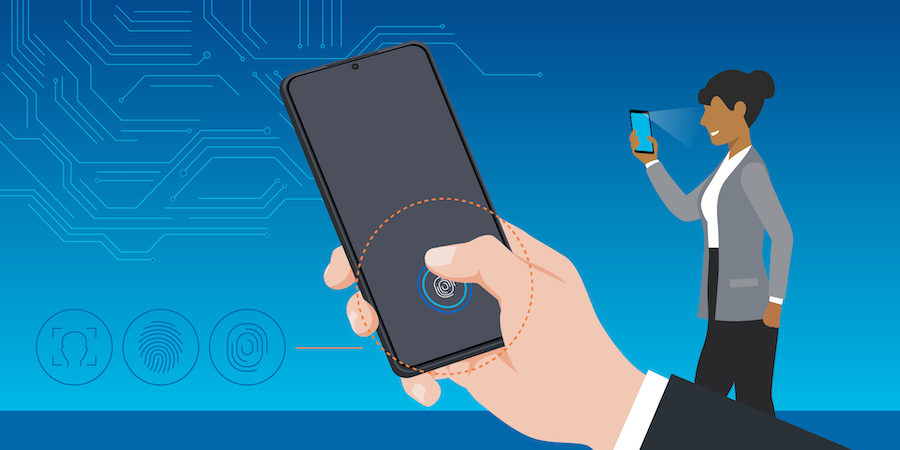In the current situation, the boundaries between digital and physical worlds continue to blur with our mobile devices being more than just tools; they’ve become extensions of ourselves. The use of biometric authentication has transformed the way we secure and access these indispensable gadgets.
Imagine seamlessly switching between your smartphone and tablet, using your unique biological traits. However, the convenience comes with a myriad of challenges, from ensuring the reliability of biometric methods to addressing the complexities of cross-platform compatibility.
In this exploration, we embark on a journey that dissects the world of biometric authentication testing for mobile devices. We delve into the unique considerations that mobile platforms like iOS and Android bring to the table. From the intricacies of biometric recognition to the complexities of testing and security. With mobile devices being extensions of our identities, effective and secure deployment of biometric authentication cannot be compromised.
Biometric Authentication Technologies on Mobile Devices
Fingerprint Recognition
Fingerprint recognition is a widely used biometric authentication method that relies on analyzing unique fingerprint patterns for individual identification. It is integrated into various devices, including smartphones and access control systems, allowing users to unlock devices or access secure areas with a simple touch. Fingerprint recognition offers a seamless and secure means of user authentication.
Facial Recognition
Facial recognition is an advanced biometric technology that distinguishes individuals by scrutinizing the unique arrangement of their eyes, nose, and mouth on their faces. This technology has surged in popularity due to its versatile applications, such as unlocking mobile devices, fortifying security measures, and streamlining user authentication procedures.
Voice Recognition
It identifies individuals by analyzing their unique vocal characteristics, such as pitch, tone, and speech patterns. This technology is employed in various applications, including voice-activated systems, call centers, and authentication processes. Voice recognition offers a hands-free and user-friendly means of user identification.
Iris Scanning
Iris scanning is a biometric technique that recognizes individuals by examining the unique patterns within the iris of the eye. It is known for its high level of security and is employed in various applications, including unlocking mobile devices and controlling access to secure areas. Iris scanning provides a robust and dependable method of user authentication, bolstering both security and convenience.
Behavioral Biometrics
Behavioral biometrics refers to the recognition of individuals based on their unique patterns of behavior, such as typing speed, gesture patterns, or mouse movements. This technology enhances security and user experience in various applications, providing continuous and passive authentication by analyzing user behaviors. Behavioral biometrics are increasingly important in the context of modern digital security.
Cross-Platform Testing Challenges
Hardware and Sensor Variations
Different mobile devices house a range of hardware. Leading to the challenge of maintaining uniform and precise performance. Varying sensor technologies require meticulous testing and calibration to ensure biometric authentication functions consistently and accurately across devices. The need for adaptable solutions that cater to the distinct sensor configurations present in the mobile landscape, ultimately ensuring a seamless and secure user experience.
Operating System Disparities
It poses a challenge for mobile biometric authentication. Mobile devices predominantly operate on iOS and Android, each offering distinct features, APIs, and security protocols. Ensuring that biometric authentication functions seamlessly and uniformly across both platforms demands intricate testing. Compatibility and consistency are the key goals, and addressing these disparities requires a nuanced approach to testing, optimization, and development to deliver a consistent user experience and robust security regardless of the chosen operating system.
UI/UX Differences
It introduces complexity in the context of mobile biometric authentication. iOS and Android platforms often feature significantly distinct user interfaces and experiences, which can influence how users engage with biometric authentication methods. Effective testing must address these disparities to ensure a consistent and user-friendly experience. With the aim to provide a uniform, intuitive, and secure interaction regardless of the chosen mobile platform.
Security Vulnerabilities
Testing procedures must be vigilant in identifying and addressing potential vulnerabilities and threats. The objective is to fortify the system against unauthorized access, data breaches, or malicious exploitation, emphasizing the critical role that rigorous testing plays in upholding the integrity of biometric authentication on mobile platforms.
Strategies for Cross-Platform Testing
Test Environment Setup and Automation Tools
Establishing a well-defined test environment and utilizing automation tools are pivotal strategies in cross-platform testing for mobile biometric authentication. A meticulously set up test environment ensures consistent and controlled conditions for assessments across different platforms and devices.
Automation tools expedite the testing process by executing pre-defined test cases, evaluating biometric methods, and recording results with precision. It not only accelerates testing but also reduces the potential for human errors, ensuring reliability and consistency in evaluating the performance of biometric authentication across diverse mobile devices and operating systems.
Test Case Development for Various Platforms and Biometric Methods
Creating thorough test cases is a pivotal strategy in cross-platform testing for mobile biometric authentication. Comprehensive test cases should encompass various mobile platforms, including iOS and Android. To evaluate compatibility and consistency.
These test cases serve as structured scenarios, systematically verifying the effectiveness and reliability of biometric authentication across a spectrum of devices and authentication techniques. By encompassing this wide range of variables, organizations can ensure their biometric solutions are robust and versatile.
Continuous Testing and Monitoring
Continuous testing and monitoring are crucial strategies in cross-platform testing for mobile biometric authentication. Implementing these practices ensures that the system’s performance remains robust and secure over time. It involves regularly monitoring the functioning of biometric authentication and conducting tests to identify and address any emerging issues promptly.
By embracing continuous testing, organizations can proactively detect and rectify vulnerabilities, bugs, or security concerns as they arise, ensuring that the system’s integrity and user experience are consistently maintained.
Regression Testing for Platform Updates
For cross-platform testing for mobile biometric authentication. Regression testing stands as an essential strategy. Given the frequent updates and changes in mobile platforms, particularly in iOS and Android.
It verifies that biometric authentication methods continue to operate effectively and securely as mobile operating systems evolve. It also assesses the compatibility of biometric systems with the latest platform versions. Ensuring that updates do not compromise the security or functionality of the authentication methods.
Conclusion
The future lies in a comprehensive strategy for cross-platform testing. It will allow us to keep the highest levels of security and user ease while adjusting to the mobile environment. We can strengthen the basis of mobile security and, more significantly, give people all around the world peace of mind knowing that their digital lives are safe and secure by doing this.
In essence, biometric authentication on mobile devices represents a convergence of technology, rigorous testing, and a user-centric approach. It signifies a commitment to safeguarding sensitive data, while also delivering a seamless, efficient, and enjoyable user experience.







